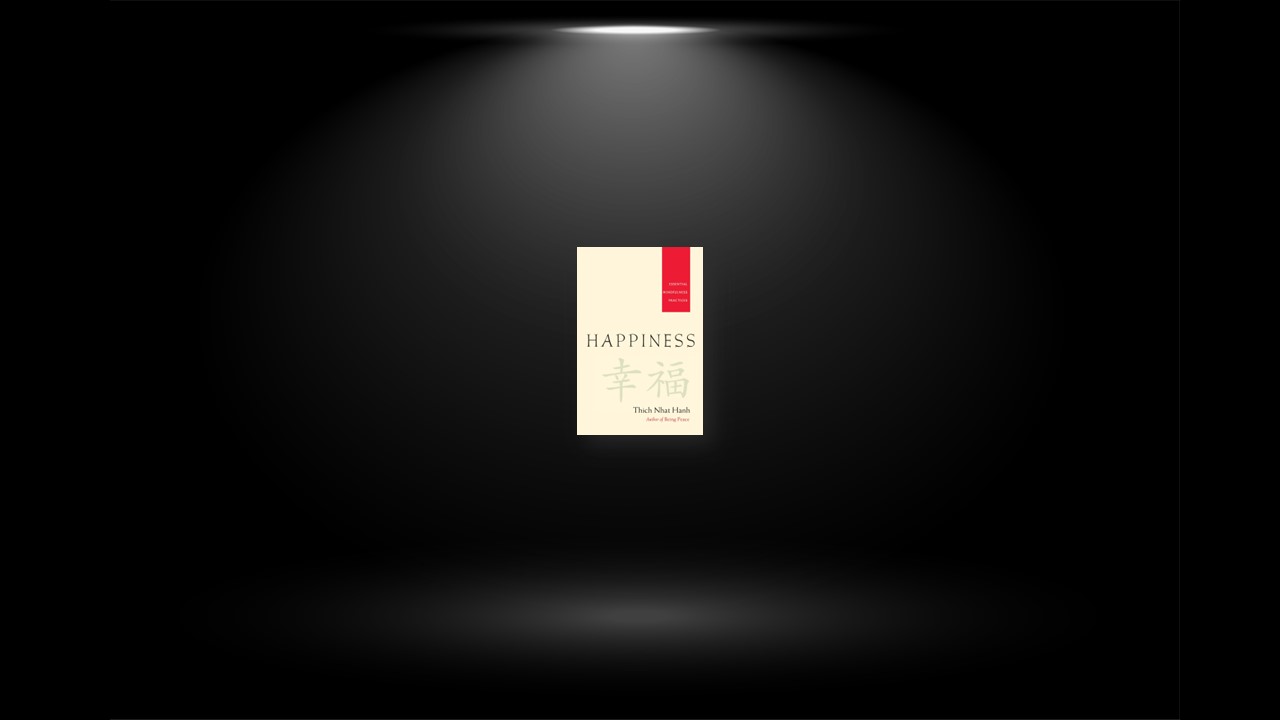CONSCIOUS BREATHING
In our daily life, we breathe, but we forget that we’re breathing. The foundation of all mindfulness practice is to bring our attention to our in-breath and out-breath. This is called mindfulness of breathing, or conscious breathing. It’s very simple, but the effect can be very great. In our daily life, although our body is in one place, our mind is often in another. Paying attention to our in-breath and out-breath brings our mind back to our body. And suddenly we are there, fully present in the here and the now.
Conscious breathing is like drinking a glass of cool water. As we breathe in, we really feel the air filling our lungs. We don’t need to control our breath. We feel the breath as it actually is. It may be long or short, deep or shallow. In the light of our awareness it will naturally become slower and deeper. Conscious breathing is the key to uniting body and mind and bringing the energy of mindfulness into each moment of our life.
SITTING MEDITATION
Sitting meditation is a way for us to return home and give full attention and care to ourselves. Every time we sit down, whether it is in our living room, at the foot of a tree, or on a cushion, we can radiate tranquility like the Buddha sitting on an altar. We bring our full attention to what is within and around us. We let our mind become spacious and our heart soft and kind. With just a few minutes of sitting in this way, we can restore ourselves fully. When we sit down peacefully, breathing and smiling with awareness, we have sovereignty over ourselves.
Sitting meditation is very healing. We can just be with whatever is within us, whether it is pain, anger, irritation, joy, love, or peace. We are with whatever is there without being carried away. We let it come, let it stay, then let it go. We have no need to push, to oppress, or to pretend our thoughts are not there. Instead, we can observe the thoughts and images in our mind with an accepting and loving eye. Despite the storms that arise in us, we’re still and calm.
WALKING MEDITATION
Walking meditation is walking just to enjoy walking. Walking without arriving, that is the technique. There is a Sanskrit word, apranihita. It means wishlessness or aimlessness. The idea is that we do not put anything ahead of ourselves and run after it. When we practice walking meditation, we walk in this spirit. We just enjoy the walking, with no particular aim or destination. Our walking is not a means to an end. We walk for the sake of walking.
Our mind tends to dart from one thing to another, like a monkey swinging from branch to branch without stopping to rest. Thoughts have millions of pathways, and they forever pull us along into the world of forgetfulness. If we can transform our walking path into a field for meditation, our feet will take every step in full awareness. Our breathing will be in harmony with our steps, and our mind will naturally be at ease. Every step we take will reinforce our peace and joy and cause a stream of calm energy to flow through us. Then we can say, “With each step, a gentle wind blows.”
MINDFUL EATING
Eating is a meditative practice. We should try to offer our full presence for every meal. As we serve our food, we can already begin practicing. Serving ourselves, we realize that many elements, such as the rain, sunshine, earth, and the care taken by the farmers and the cooks, have all come together to form this wonderful meal. In fact, through this food we see that the entire universe is supporting our existence.
Having the opportunity to sit and enjoy wonderful food is something precious, something not everyone has. Many people in the world are hungry. When I hold a bowl of rice or a piece of bread, I know that I am fortunate, and I feel compassion for all those who have no food to eat and are without friends or family. This is a very deep practice. We do not need to go to a temple or a church in order to practice this. We can practice it right at our dinner table. Mindful eating can cultivate seeds of compassion and understanding that will strengthen us to do something to help hungry and lonely people be nourished.
RESTING AND STOPPING
When a forest animal is sick, it lies down and does nothing. Often it won’t even eat or drink. All of its energy is directed toward healing. We need to practice this kind of resting even when we are not sick. Knowing when to rest is a deep practice. Sometimes we try too hard in our practice or we work too much without mindfulness, and we become tired very easily. The practice of mindfulness should not be tiring, rather it should be energizing. But when we recognize that we are tired, we should find every means possible to rest. We need to ask for help, delegating tasks whenever possible.
Practicing with a tired body and mind doesn’t help; it can cause more problems. To take care of ourselves is to take care of our whole community. Resting may mean we stop what we’re doing and take a five-minute walk outside, or we go on a fast for a day or two, or it may mean we practice silence for a period. There are many ways for us to rest, so we must pay attention to the rhythm of our bodies and minds for the benefit of all. Mindful breathing, whether in the sitting or in the lying position, is the practice of resting. Let us learn the art of resting and allow our body and our mind to restore themselves. Not thinking and not doing anything is part of the art of resting and healing.
DEEP LISTENING AND LOVING SPEECH
When communication is cut off, we all suffer. When no one listens to us or understands us, we become like a bomb ready to explode. Compassionate listening brings about healing. Sometimes only ten minutes of listening deeply can transform us and bring a smile back to our lips.
Many of us have lost our capacity for listening and using loving speech in our families. It may be that no one is capable of listening to anyone else. So we feel very lonely even within our own families. We go to a therapist, hoping that she is able to listen to us. But many therapists also have deep suffering within. Sometimes they cannot listen as deeply as they would like. So if we really love someone, we need to train ourselves to be a deep listener.
We also need to train ourselves to use loving speech. We have lost our capacity to say things calmly. We get irritated too easily. Every time we open our mouths, our speech becomes sour or bitter. We have lost our capacity for speaking with kindness. Without this ability, we cannot succeed in restoring harmony, love, and happiness.
TAKING CARE OF ANGER AND OTHER STRONG EMOTIONS
Our anger is like a small child crying out for his mother. When the baby cries, the mother takes him gently in her arms and listens and observes carefully to find out what is wrong. The loving action of holding her baby with tenderness already soothes the baby’s suffering. Likewise, we can take our anger in our loving arms and right away we will feel relief. We don’t need to reject our anger. It is a part of us that needs our love and deep listening just as a baby does. After the baby has calmed down, the mother can feel if the baby has a fever or needs a change of diaper. When we feel calm and cool, we too can look deeply at our anger and see clearly the conditions allowing our anger to rise.
A strong emotion is similar to a storm, and it can create a lot of damage. We need to figure out a way to protect ourselves, to create a safe environment, and to wait out the storm. We cannot sit and wait for the storm to go by quickly while we receive all the damage of the storm directly. Keeping our body and mind safe from the storm is our practice. After each storm, we become stronger, more solid, and soon we’re no longer fearful of storms. We no longer pray for a calm sky and a calm ocean. Instead, we pray that we have the wisdom and strength to deal with the difficulties that arise in life.
We don’t have to wait until the emotional storm arises in us to begin to practice. We have to practice today, and every day, for five to ten minutes. After a couple of weeks, we have a handle on our method of breathing, and when the emotional storms arise in us, we automatically remember to practice right away.


